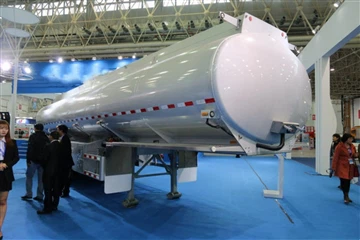Understanding RAM Trash: Causes, Effects, and Solutions

Introduction
In the world of computing, RAM (Random Access Memory) plays a crucial role in processing data and ensuring smooth operation of applications. However, many users encounter an issue referred to as “RAM trash” — a situation where the memory becomes cluttered with unnecessary data, leading to performance slowdowns and instability. In this article, we will explore the concept of RAM trash in depth, discussing its causes, effects, and practical solutions to help ensure that your system runs efficiently.
What is RAM Trash?
RAM trash occurs when the random access memory on a computer is filled with outdated or irrelevant data, which affects overall performance. This condition can arise from various factors, leading to the fragmentation of memory and causing various applications to sluggishly function. Understanding what RAM trash specifically refers to is essential for addressing the issue effectively.
Defining RAM Trash
At its core, RAM trash refers to the accumulation of unusable or inefficiently managed data in RAM. This can occur due to:
- Memory leaks from poorly optimized applications
- Overloaded memory from running too many simultaneous processes
- Fragmentation caused by repeated allocating and deallocating of memory
Causes of RAM Trash
Understanding the causes of RAM trash is crucial in preventing it. Below are the common causes that lead to memory degradation.
1. Memory Leaks
Memory leaks occur when an application fails to release memory that is no longer needed. Over time, this can lead to a significant reduction in available RAM.
2. Excessive Background Processes
Running multiple applications or services in the background can consume RAM, leading to RAM trash. This is particularly common when users have several tabs open in a web browser.
3. Poorly Optimized Software
Software that is not well designed may allocate unnecessary amounts of RAM without giving it back. This can significantly contribute to RAM trash over time.
Example:
Consider a photo editing application that requires a substantial amount of RAM when in use. If it doesn’t properly clear the data from the RAM after closing, it can leave behind a large memory footprint.
4. Insufficient RAM
If a computer is equipped with insufficient RAM for its operating needs, it can frequently reach maximum capacity, leading to RAM trash.
5. Inadequate System Maintenance
Neglecting to perform regular system maintenance can lead to an accumulation of unnecessary data in the memory.
Effects of RAM Trash
RAM trash can have several detrimental effects on your computer’s performance.
1. Slow System Performance
As RAM becomes filled with unusable data, the system struggles to find the necessary resources, leading to slow performance.
2. Application Crashes
Applications may crash or freeze due to inadequate available memory for operation, leading to frustration and loss of productivity.
3. Increased Load Times
Users may experience longer load times for software and files due to the system’s struggle to allocate free memory.
Comparative Table: Effects of RAM Trash
| Effect | Description |
|---|---|
| Slow Performance | Reduced responsiveness of applications |
| Application Crashes | Unresponsive applications leading to data loss |
| Long Load Times | Increased delays in loading software and files |
How to Identify RAM Trash
Recognizing the signs of RAM trash is the first step toward addressing the issue. Here are some indicators:
1. Task Manager Analysis
Using the task manager, you can monitor processes and observe which applications are utilizing an excessive amount of RAM.
2. System Performance Monitoring Tools
Utilize built-in or third-party performance monitoring tools to get a comprehensive overview of your RAM usage patterns.
3. Frequent Warning Messages
Receiving unusual error messages related to memory constraints can signal the presence of RAM trash.

Practical Tips to Avoid RAM Trash
Preventing RAM trash is critically important for maintaining system performance. Here are effective strategies:
1. Regularly Restart Your Computer
Restarting your system clears the RAM and helps to eliminate excess data that may have accumulated.
2. Limit Background Processes
Close any unnecessary applications and background processes to free up RAM resources. Limit the number of browser tabs to improve performance.
3. Optimize Software Settings
Adjust settings for resource-heavy applications to manage RAM allocation better. For example, adjust the cache settings in web browsers.
4. Keep Your Operating System Updated
Regularly update your operating system to ensure that any bugs related to memory management are patched.
Example:
New versions of applications often come with performance improvements and better memory management protocols.
5. Upgrade Your RAM
If you frequently experience RAM trash issues, consider upgrading your RAM to accommodate the demands of modern applications.
Solutions for RAM Trash
If despite all preventive measures RAM trash still occurs, here are effective solutions to address the issue:
1. Clean Up System Files
Utilize disk cleanup tools to remove temporary files that can incorrectly occupy RAM space.
2. Use Memory Optimization Tools
There are various software solutions designed to optimize memory usage by clearing out unnecessary data from RAM.

3. Monitor for Memory Leaks
Be vigilant about the apps you install and monitor them for memory leaks. If you identify an application causing issues, consider alternatives.
Future Trends in RAM Management
As technology advances, RAM management techniques will continue to evolve. Here are some future trends to consider:
1. AI-Powered Memory Management

Artificial intelligence can be utilized to optimize memory allocation dynamically, preventing RAM trash more effectively.
2. More Efficient Coding Practices
Developers are expected to adopt better coding standards to minimize memory leaks and optimize RAM usage.
3. Hardware Improvements
The advent of new RAM technologies promises better efficiency and optimization capabilities in both personal and commercial systems.
FAQs
What is the primary cause of RAM trash?
The primary causes of RAM trash include memory leaks from applications, excessive background processes, and poor software optimization.
How can I check for RAM trash on my computer?
You can use the system task manager to monitor RAM usage and identify processes consuming excess memory, alongside dedicated monitoring tools.
Are there specific tools for cleaning RAM?
Yes, there are various software tools available, such as memory optimizers, that can help clear unnecessary data from your RAM.
What should I do if my computer frequently crashes due to RAM issues?
If your computer crashes frequently, consider restarting your system, limiting background processes, or upgrading your RAM if necessary.
Is it possible to recover RAM from trash?
Yes, by utilizing memory cleaning software and optimizing software settings, you can recover RAM and improve system performance.
When should I consider upgrading my RAM?
If you consistently experience slowdowns and performance issues despite following best practices, it may be time to upgrade your RAM to meet your computing needs.
